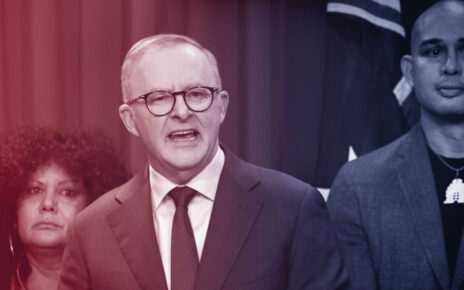Save articles for later
Add articles to your saved list and come back to them any time.
Heat waves are a silent killer that lead to more deaths each year than natural disasters and Australians need to be prepared for them, Emergency Management Minister Murray Watt has said ahead of the country’s hottest and driest weather since Black Summer.
Sydney, Canberra and Melbourne have all endured heat waves this month and the Bureau of Meteorology last week declared an El Nino event and a positive Indian Ocean Dipole.
A man tries to cool down during a heat wave in Sydney, 2019, by lying on the floorboards. Credit: Christopher Pearce
Watt said that will bring a more difficult summer, in terms of hot weather risk, than the country had seen since the Black Summer of 2019-20.
“And while there’s been a lot of focus on bushfires, and understandably so, one of the other risks that we face this year is heat waves, which of course are the silent killer of Australians,” he said.
“Actually, we lose more people to heat waves every year than we do from other forms of natural disasters.”
As the federal government convened its first major summit of 2023 for emergency services, different governments and the private sector to get ready for the upcoming summer, Watt said the elderly and disabled were at greatest risk.
“Some people will be better positioned than others, depending whether they have airconditioning in their homes,” he said.
“But we’re also working with local governments around public libraries, swimming pools, public facilities that people can use to get relief in those heatwave conditions.”
Brianna Casey, chief executive officer of Foodbank, said she was particularly concerned about the impact on cash-strapped clients who “just don’t have the resilience that we need right now”.
“We’ve already got people seeking food relief, bringing in empty containers of water for us to actually freeze on their behalf in lieu of freezers because they can’t afford the running costs of keeping fridges and freezers on,” she said.
Joe Buffone, the director-general of Emergency Management Australia, said the agency had been learning from North America and Europe, which battled extreme heat and fires.
“But there is a national framework that makes sure there’s consistency and warning. We’re also working with the energy sector and with health sectors to make sure that they are acutely aware of the potential impacts of heat,” he said.
“The big focus is around people: making sure that they have the information to protect themselves and have support. Look after your neighbours, in particular the elderly, and those that have [mobility issues].
“An important part of that is making sure that they get early warning, they’re prepared and they stay cool, they stay hydrated, and they take advice from the warnings from both emergency services, but also from the health sector.”
The Bureau of Meteorology’s heatwave warning service provides alerts via its mobile app four days in advance. The alert provides a warning as well as health messages tailored to particular areas or at-risk communities.
“It’s a very powerful way of giving the community insight around a around a heatwave coming,” the bureau’s chief executive Andrew Johnson said, noting messages would also be issued on social media.
He also said his agency was also working with stakeholders across Australia’s energy network to manage supply during extreme heat.
For example, fewer electrons are sent down transmission power connectors during hot weather because energy systems can no longer sustain the same voltages, and power lines sag.
“It’s a very, very complex system… There’s always a risk from severe weather, right through the power grid,” Johnson said.
“As a [former chief executive] once told me: the history of this country is that our power has been run by fossil fuels. But the future of our power in this country will be run by the weather.
“The weather plays an absolutely vital role both on demand and supply side… So we put a very significant effort into working side-by-side with all the players in the system.”
Cut through the noise of federal politics with news, views and expert analysis. Subscribers can sign up to our weekly Inside Politics newsletter.
Most Viewed in Politics
From our partners
Source: Read Full Article



